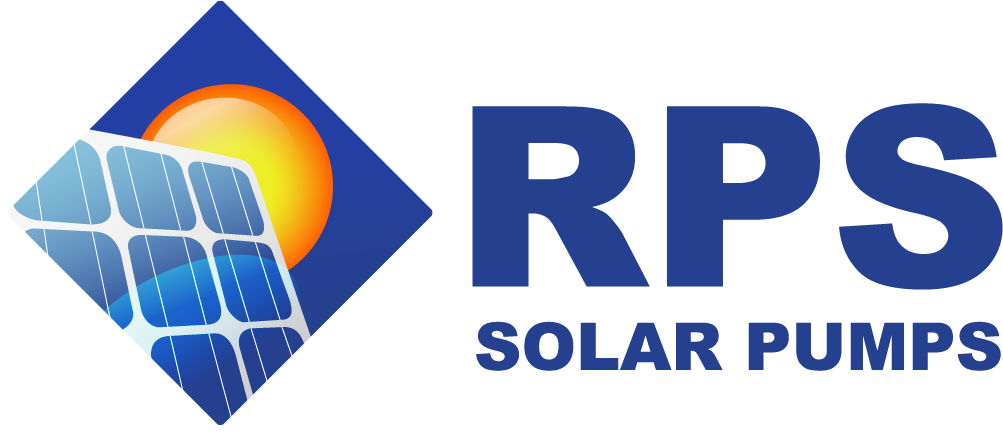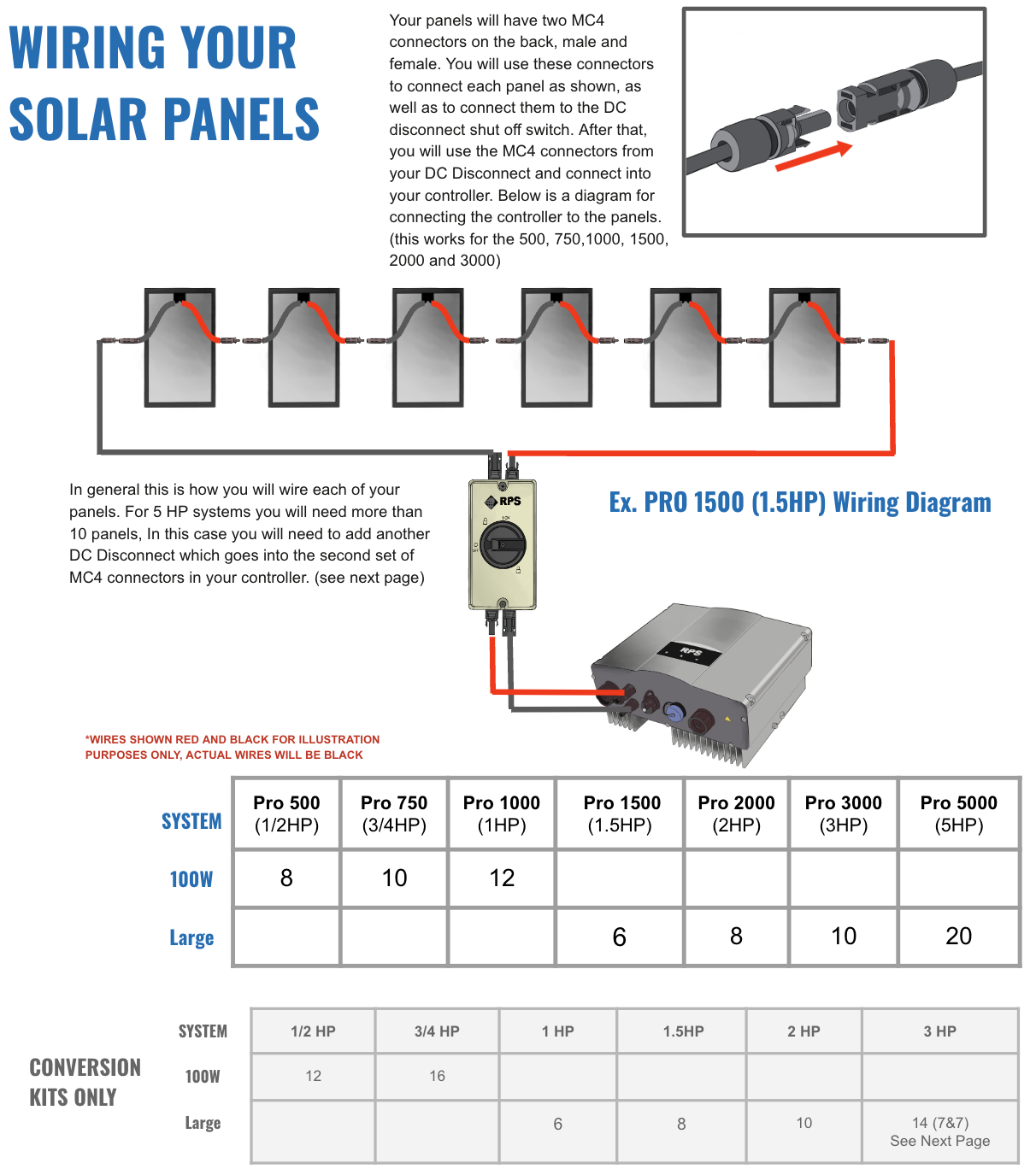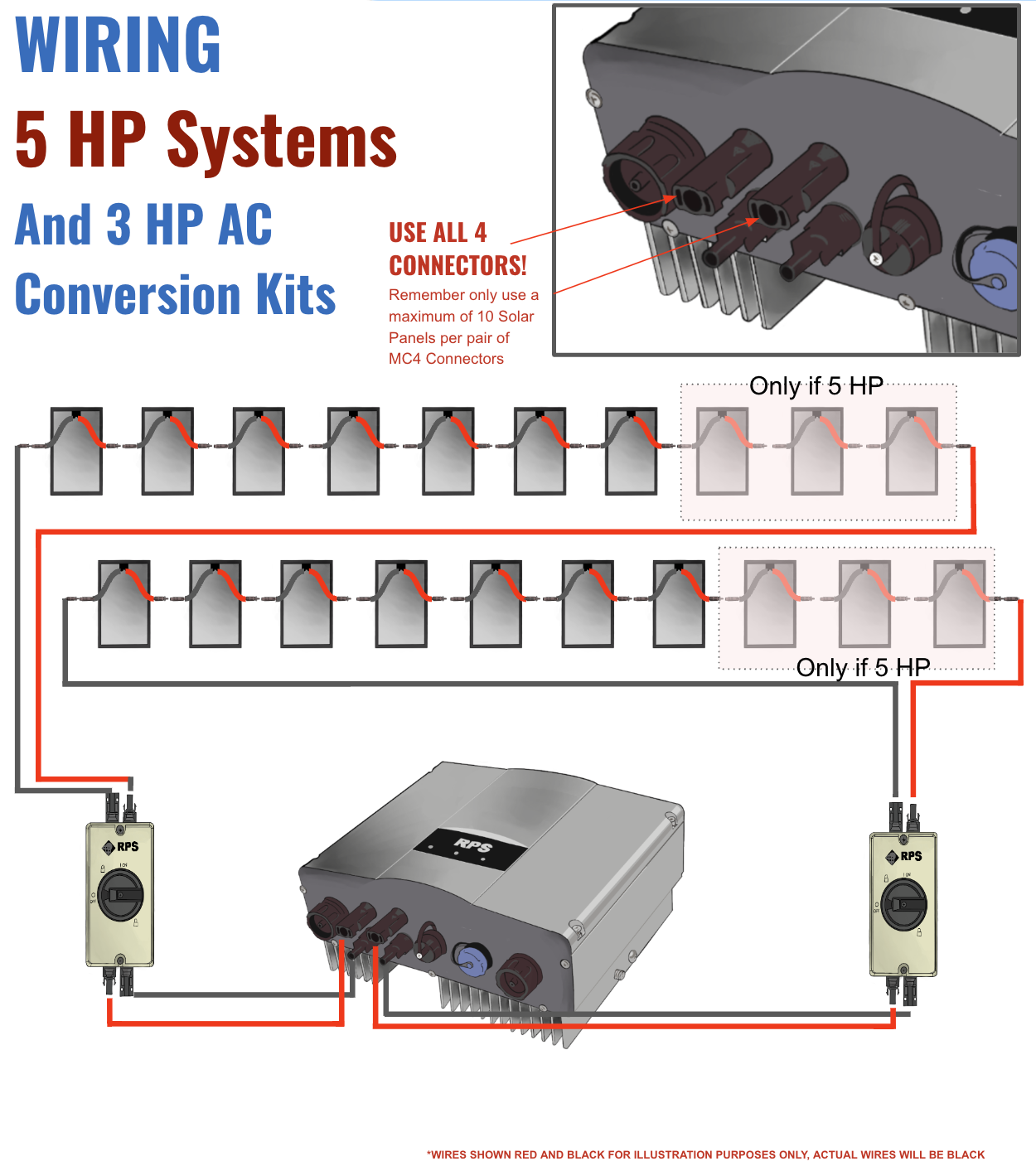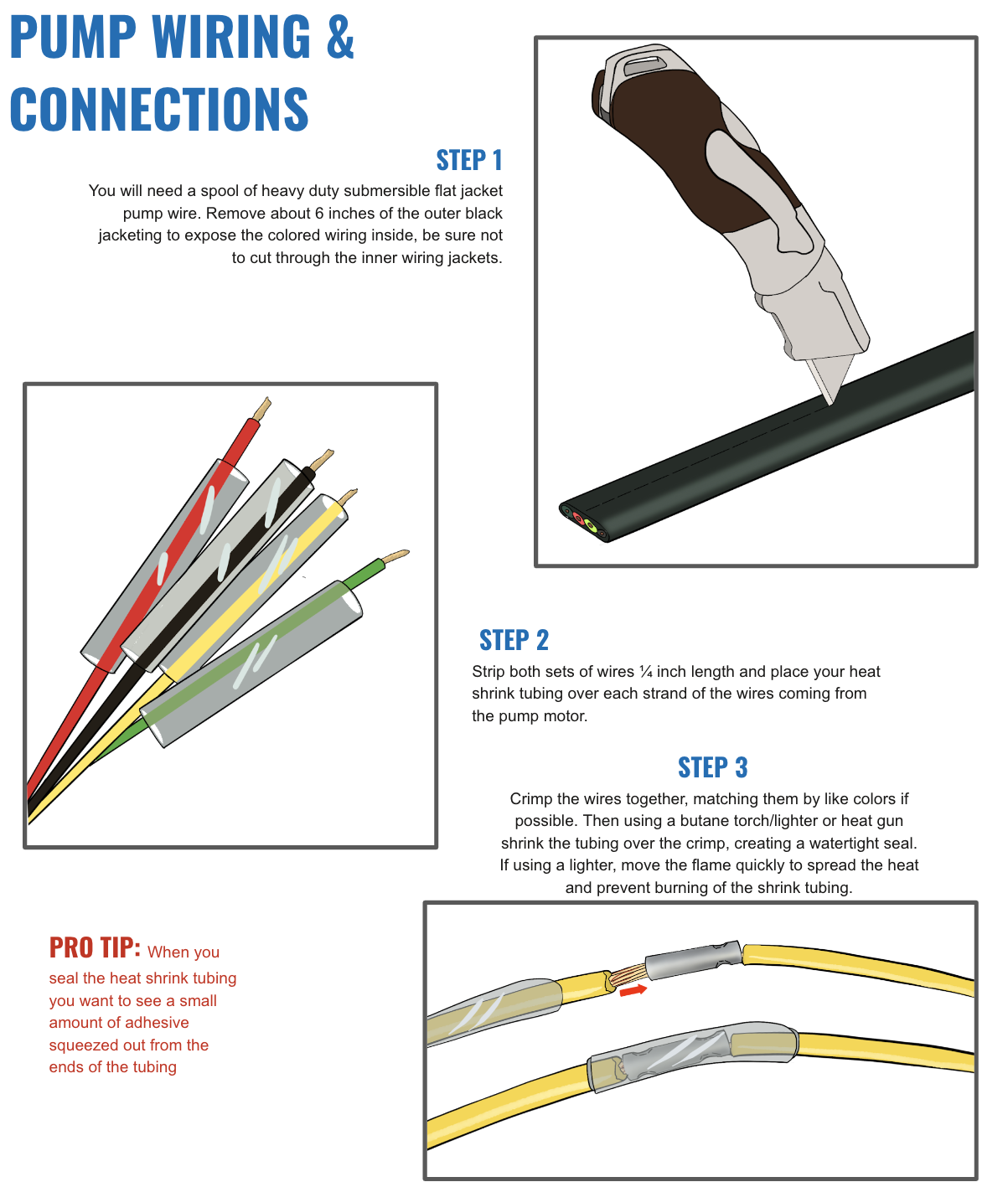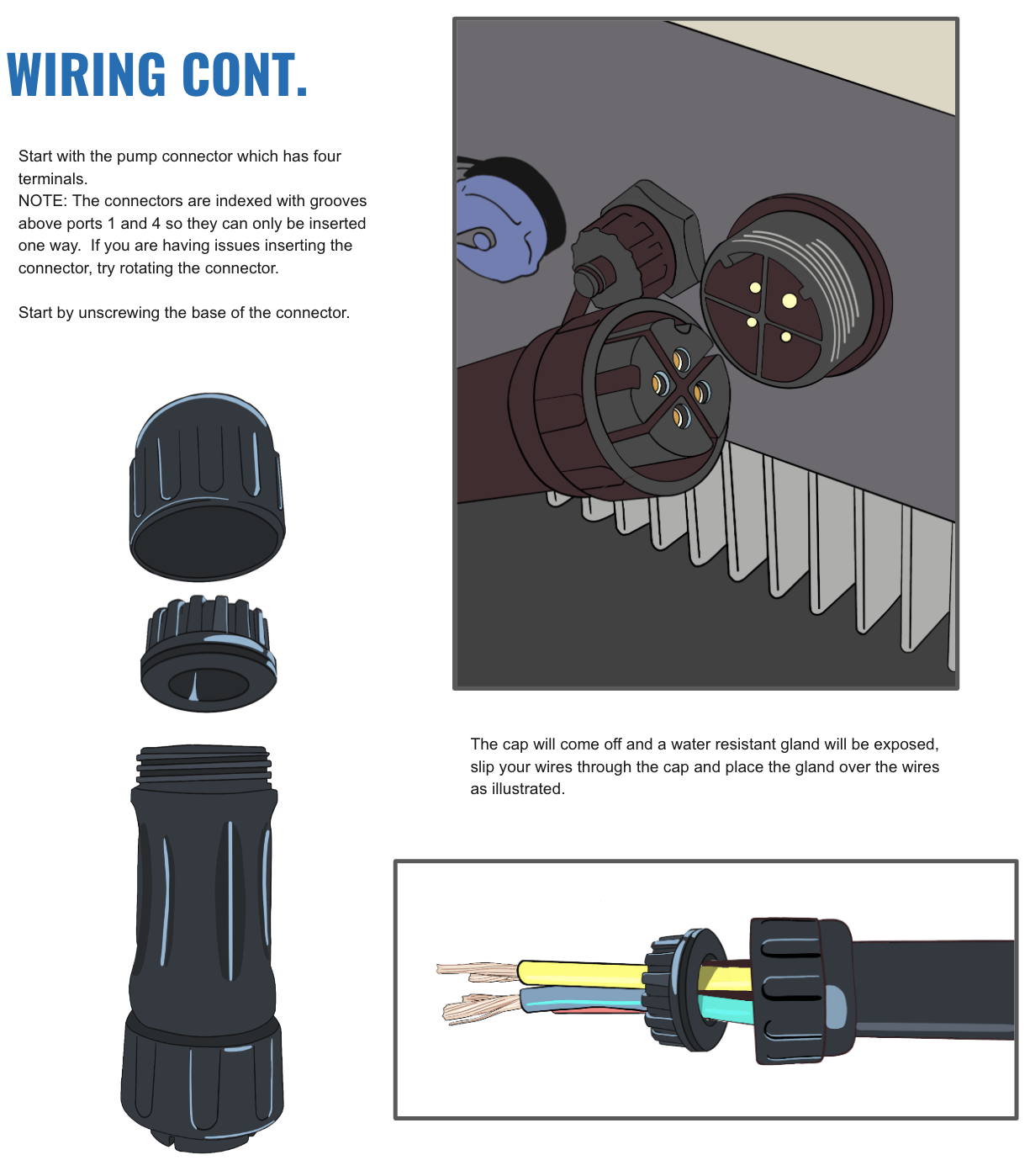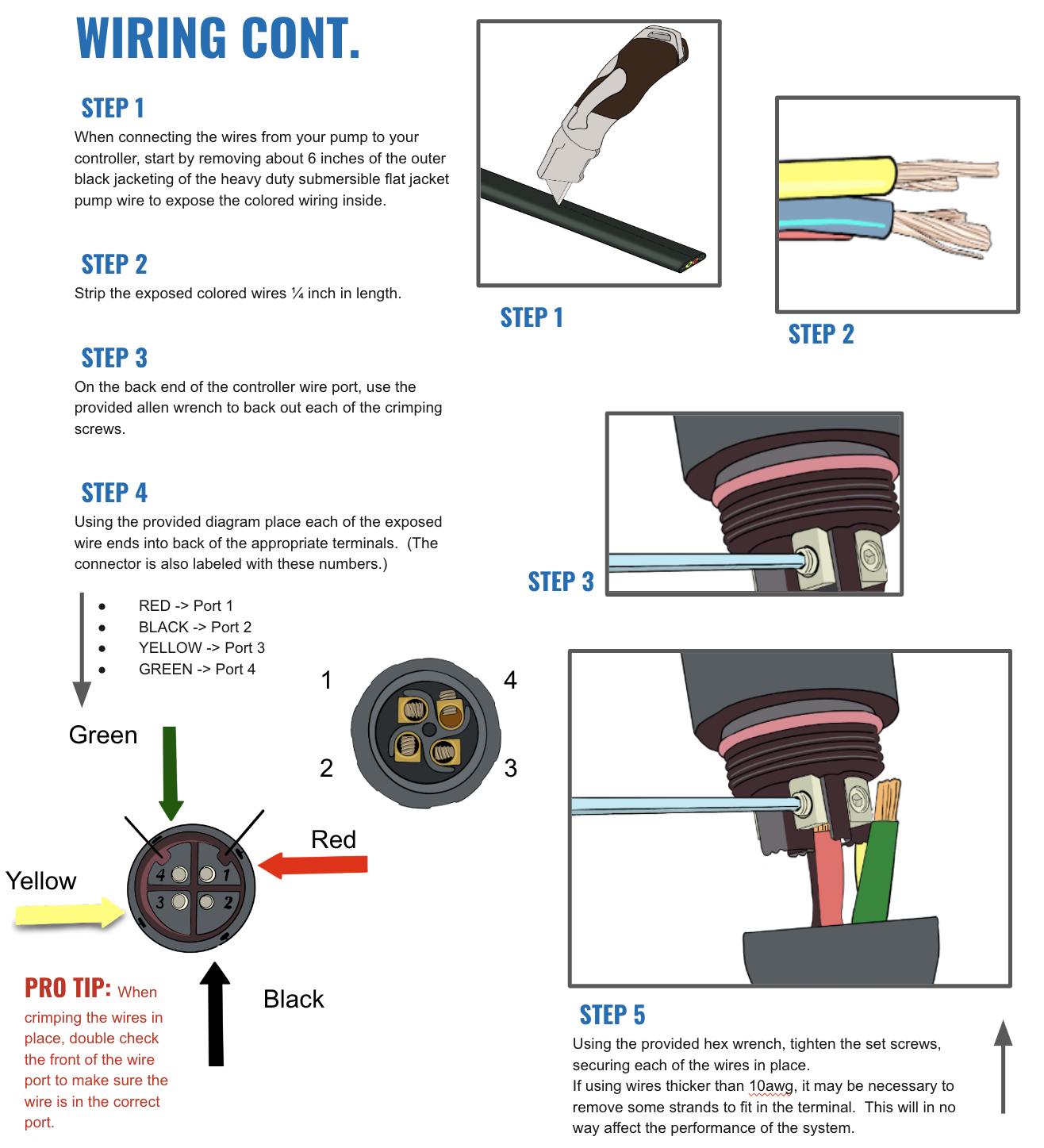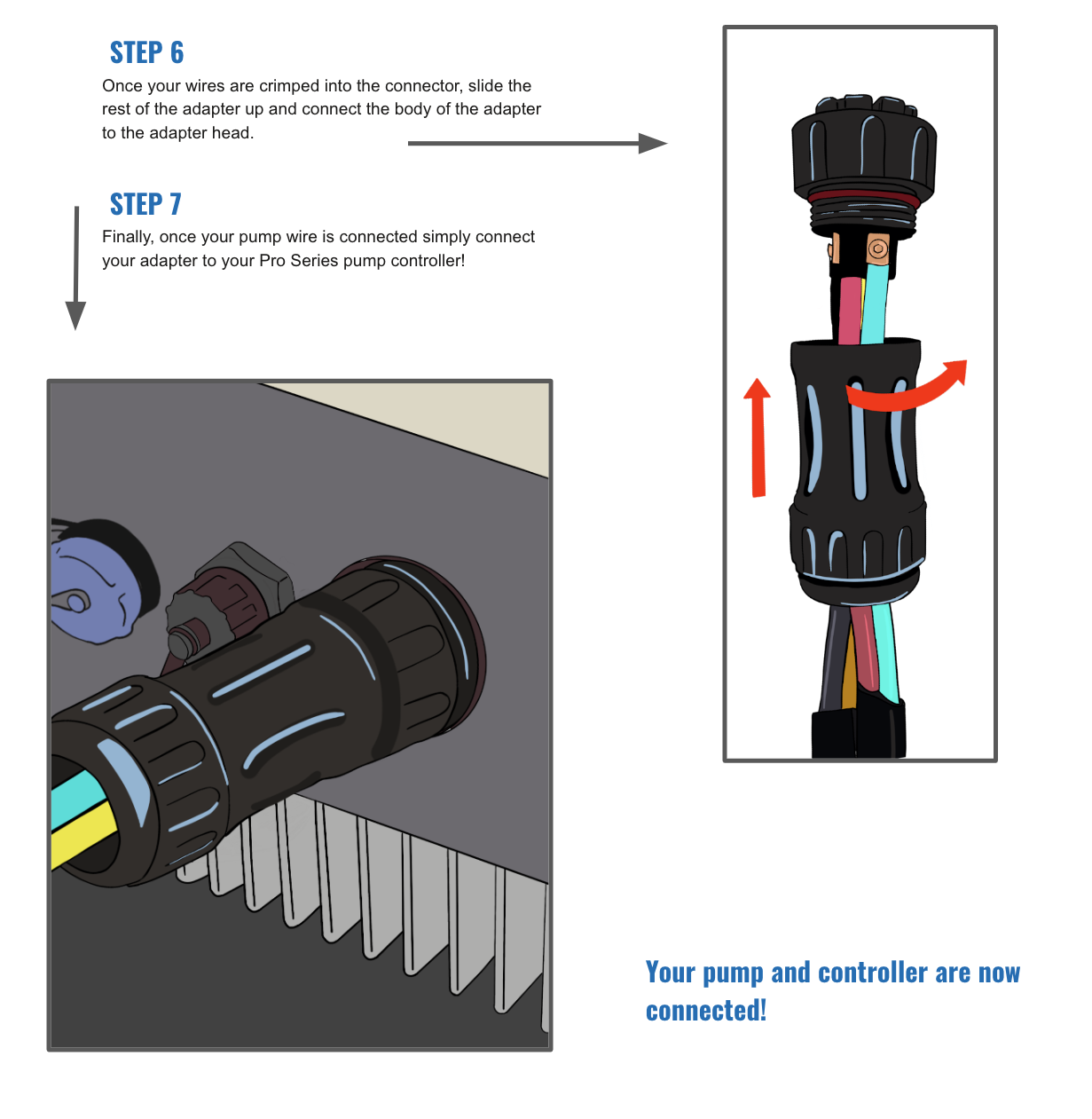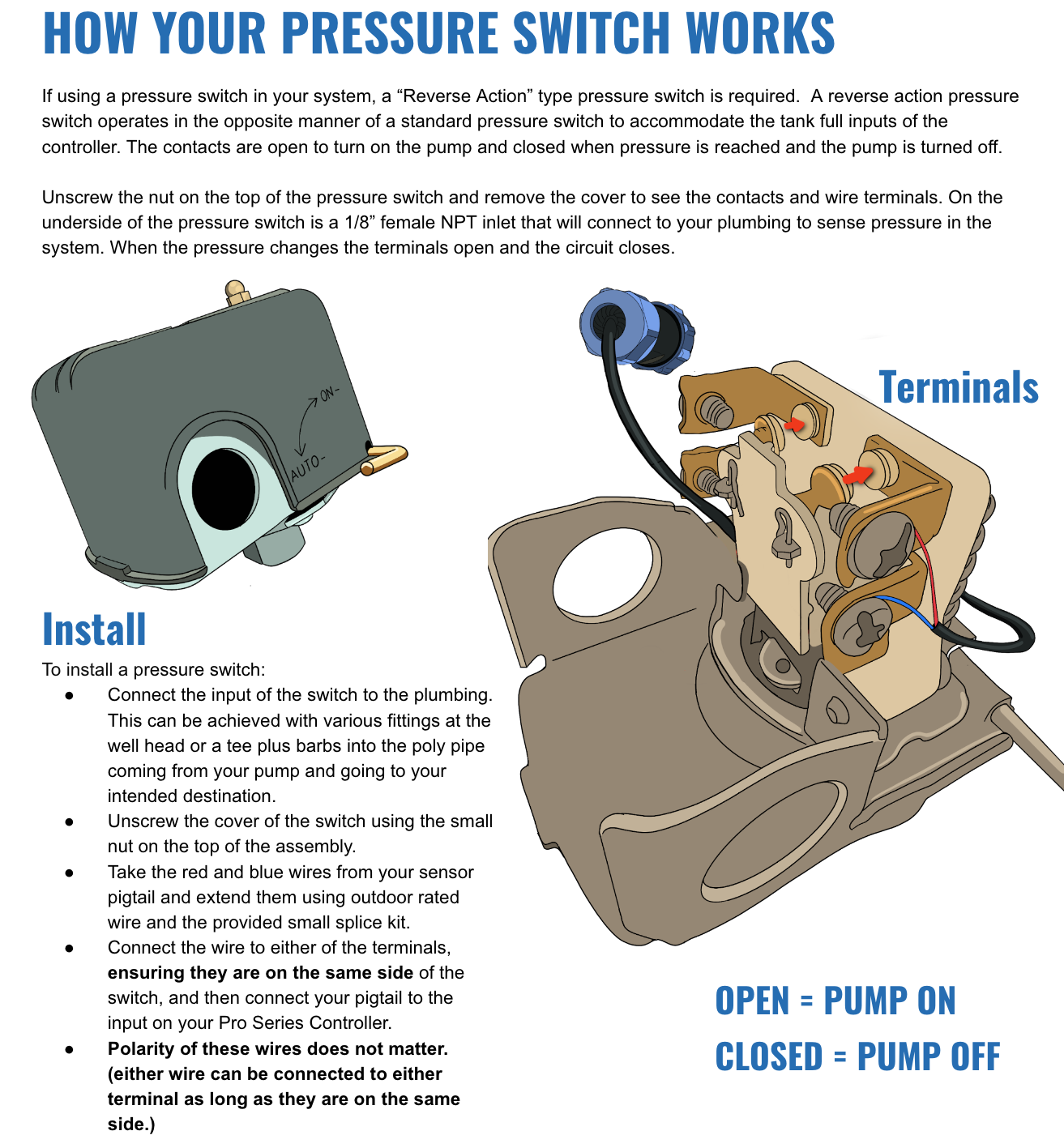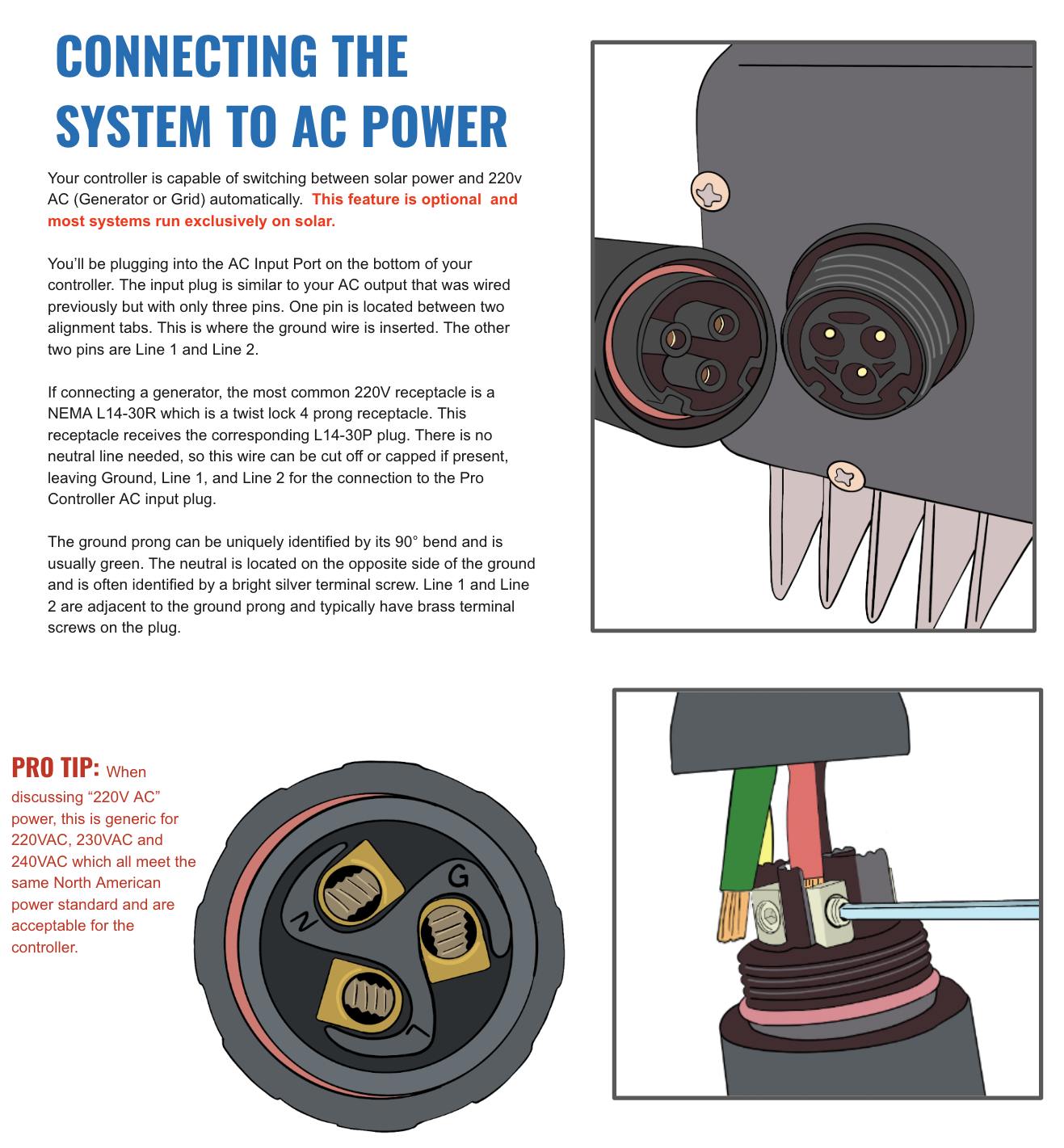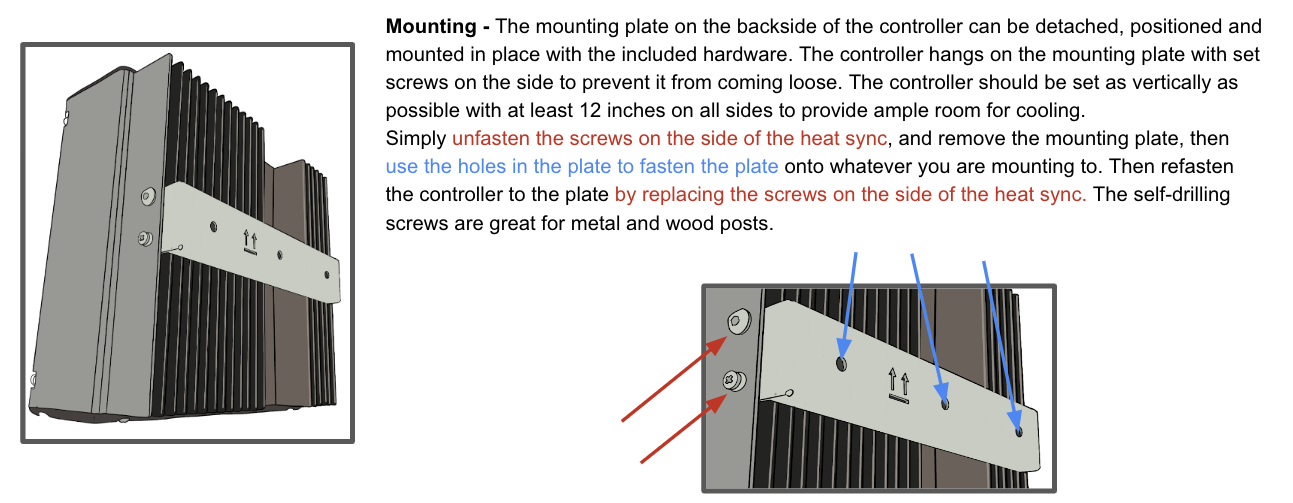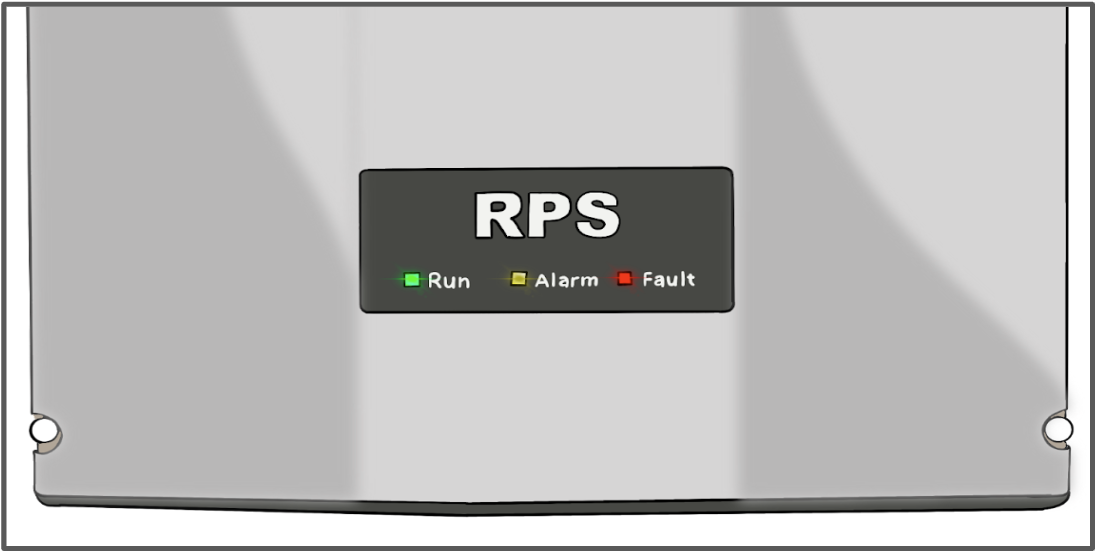Pro Controller Spec Sheet
Find out a little more about the brains behind your solar pumping system, Pro Controller.
Having Issues? Start Here! Here are some frequently asked questions
The most common support calls we receive about the Pro Deep and Volume Submersible systems are about solar panel wiring, pump wiring, adding more panels, connecting generators and setting up a pressure shut off/float. If the Pro Keyboard is flashing a fault code, scroll down below to check out fault troubleshooting based on the version of controller. Check through the following information, and maybe you’ll be able to quickly self-diagnose the issue.
For most of the Pro Volume and Pro Deep kits you will use 10 gauge / three conductor + ground (four total wires).
Pro3000D, Pro5000V6, Pro5000V8, Pro5000D and Lakemaker XL 5 HP: Check with an RPS Engineer on the gauge of wire, 10 gauge is standard but a larger gauge may be needed depending on the HP and distance from pump to controller. We will perform a voltage loss calculation to finalize wire gauge.
Purchasing Wire
The type of pipe used for dropping a pump into a well depends on the drop depth, a deeper drop depth requires stronger, thicker walled pipe. Flow rate produced by the pump also influences the pipe diameter, ask our engineers if you are unsure what type and diameter pipe to use.


Your Pro Controller will monitor pump operation and shut the pump off before it can run dry. The controller is constantly monitoring the mix of amperage and voltage sent to the pump, and a sharp increase in amperage will alert the controller to a possible run-dry scenario, leading to pump shut-off.
Why A Reverse Action Pressure Switch Instead of a Regular Pressure Switch?
Our controller logic for tank full relies on a reverse action pressure switch.
With a normal action pressure switch, when pressure is low a normal action pressure switches the contacts closed. When pressure is reached the contacts close.
Reverse action are reverse, when pressure is low the contacts are open. When pressure is reached the contacts close. When the contacts close the pump turns off.
Upon activation, your controller allows you to switch between solar power and 220v AC (Generator or Grid) automatically. You’ll be plugging into the AC Input Port on the bottom of your controller. You are going to wire out the Neutral and connect two hots (L1 and L2) to the L and N terminals in the 3 prong plug supplied in your kit.

Pro 500, 750, 1000, 1500, 2000, 3000
You’ll be connecting + wires to – wires in ‘series’ (panels can be oriented in different patterns for mounting purposes though).The positive (+) and negative (-) wires from your solar array will come into the DC Cut-off switch from the top. The short MC4 jumper wires included in your kit will connect at the bottom of the DC cut-off switch. All connections will be prepared before making the final connection to the DC inputs on the bottom of the solar pump controller. Mount your solar panels away from all possible shade, facing south at the proper tilt angle for your latitude.
Wiring a Pressure Switch with RPS Solar Pumps
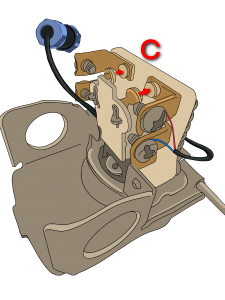 1) A check valve is needed (usually installed at the pump) to maintain pressure in the line and allow for proper shut-off.
1) A check valve is needed (usually installed at the pump) to maintain pressure in the line and allow for proper shut-off.
2) You’ll need only one side of the reverse action pressure switch. Wire from the two screw terminals next to each other (remove gray cover to access) to the Tank Terminals (TH, COM2) in your RPS controller. Use two strand 22 gauge wire or thicker. Polarity doesn’t matter here.
3) When the shut-off pressure is reached in the line (ie. the tank float valve is closed or the home’s faucets are all closed) the electrical contacts of the pressure switch will touch, close the circuit, and tell the controller to shut the pump down.
4) The pressure switch will attach inline anywhere between the pump and the outlet with a Tee and ¼” hex nipple. If using a pressure tank (not required) attach pressure switch directly to Tank Tee.
What do the Indicator lights mean?
RUN – GREEN LED
- STEADY GREEN light means the pump motor is running normally between the minimum and maximum frequency.
BLINKING GREEN light means that your system is in startup mode.
ALARM – AMBER LED – This is a normal stop condition. When the ALARM light is illuminated an external condition is sending a signal to the controller to stop pumping water. Pumping will only resume when the external condition is resolved. The most common conditions causing a stop condition are:
- The tank is full.
- There is insufficient light to run your system.
- There is not enough water in the well (sucking air) and pump is waiting on a preprogrammed time delay before it can resume.
FAULT – RED LED
- If the FAULT light is illuminated it means a fault condition has occurred within the controller. Usually this indicates there is insufficient power to the controller to power up the pump (check that your solar panels are in full sun with zero shade. Even a small shadow can have significant impacts to water production).
- It can also indicate a system or programming fault that will place the controller in Standby to protect it. A fault condition can be temporary and may require resetting the controller by cutting system power with the DC disconnect, waiting 60 seconds (no lights on!) and then powering back on to resolve the fault.
- If the fault occurs repeatedly you will need to connect your Keypad to the controller to read out the fault condition displayed on the red seven segment LED on the keypad. RPS Support Engineers can help troubleshoot in cases of repeated faults.
If you plan pumping into a tank and want the pump to shut off once the tank has filled, you’ll need an external shut off like a float switch or a mechanical float valve connected to a reverse action pressure switch. These floats will send a signal to the controller telling the pump to shut off once the tank is full, and another signal telling the pump to turn on if the tank is emptying.
With that being said, you could potentially swap out the current pump with a higher powered pump and keep the same controller. A higher horsepower pump would require more panels as well.
For example, we have a customer out in Arizona with a Pro1000D who started out with the standard twelve 100W panels and then bought an additional twelve 100W panels for expansion. They are able to pump through the end of the day and under rolling clouds.
Thinking of adding more panels? You have two options….
- Incrementally add more panels in series (daisy chain). Ensure that you do not exceed the controller’s maximum 450VDC
- Double the number of panels used, connect the new string in parallel to the original string of panels
